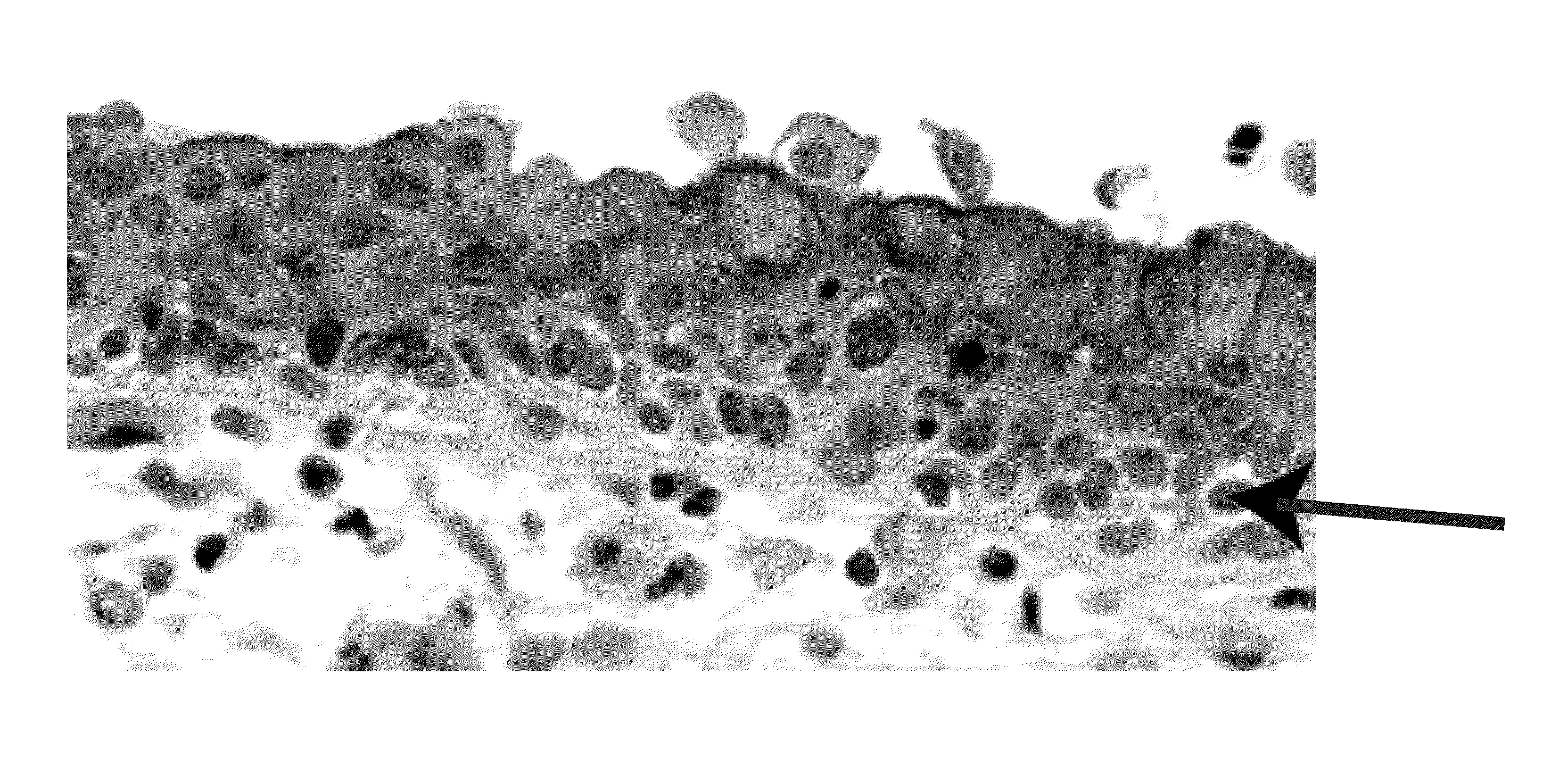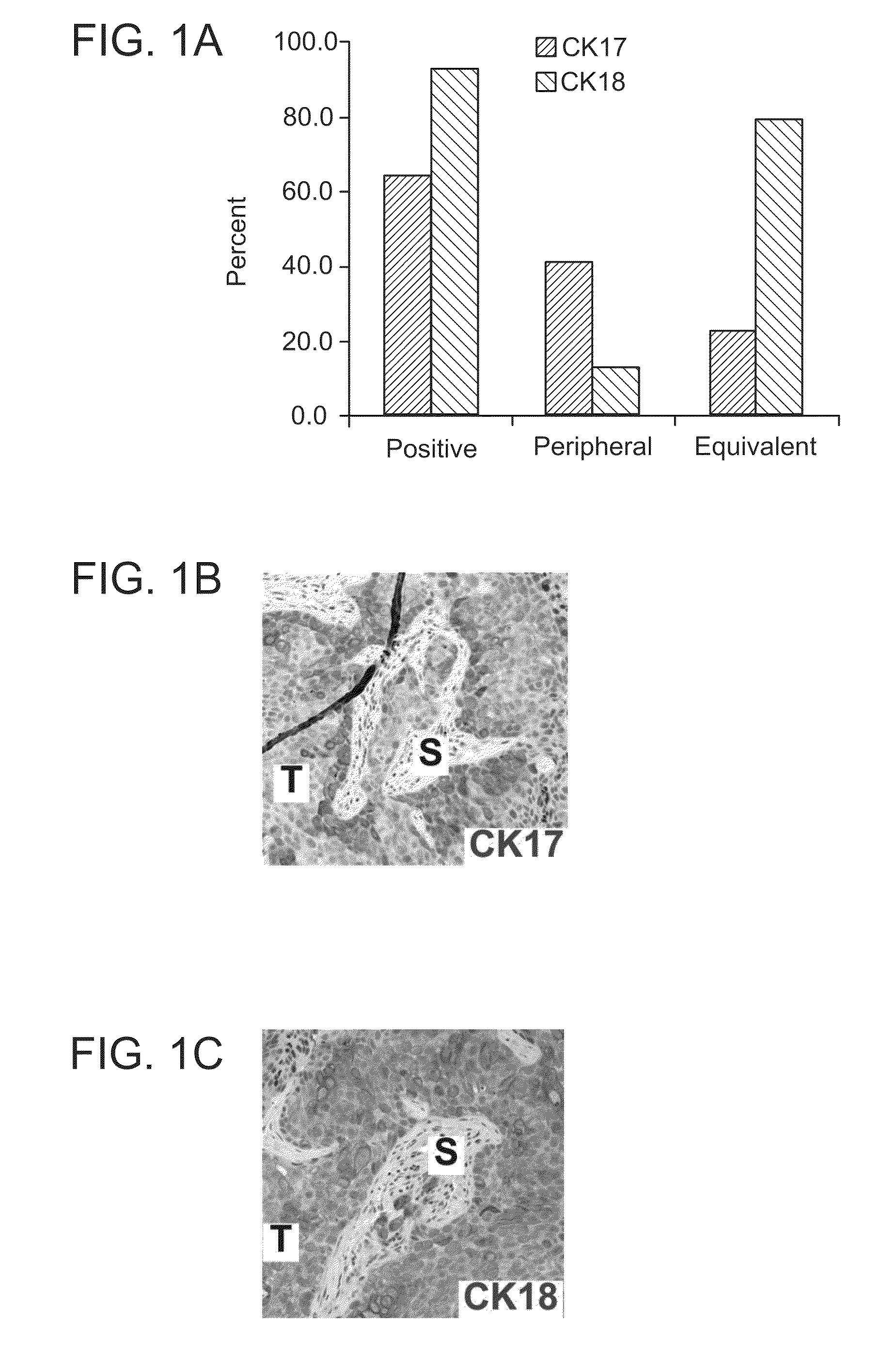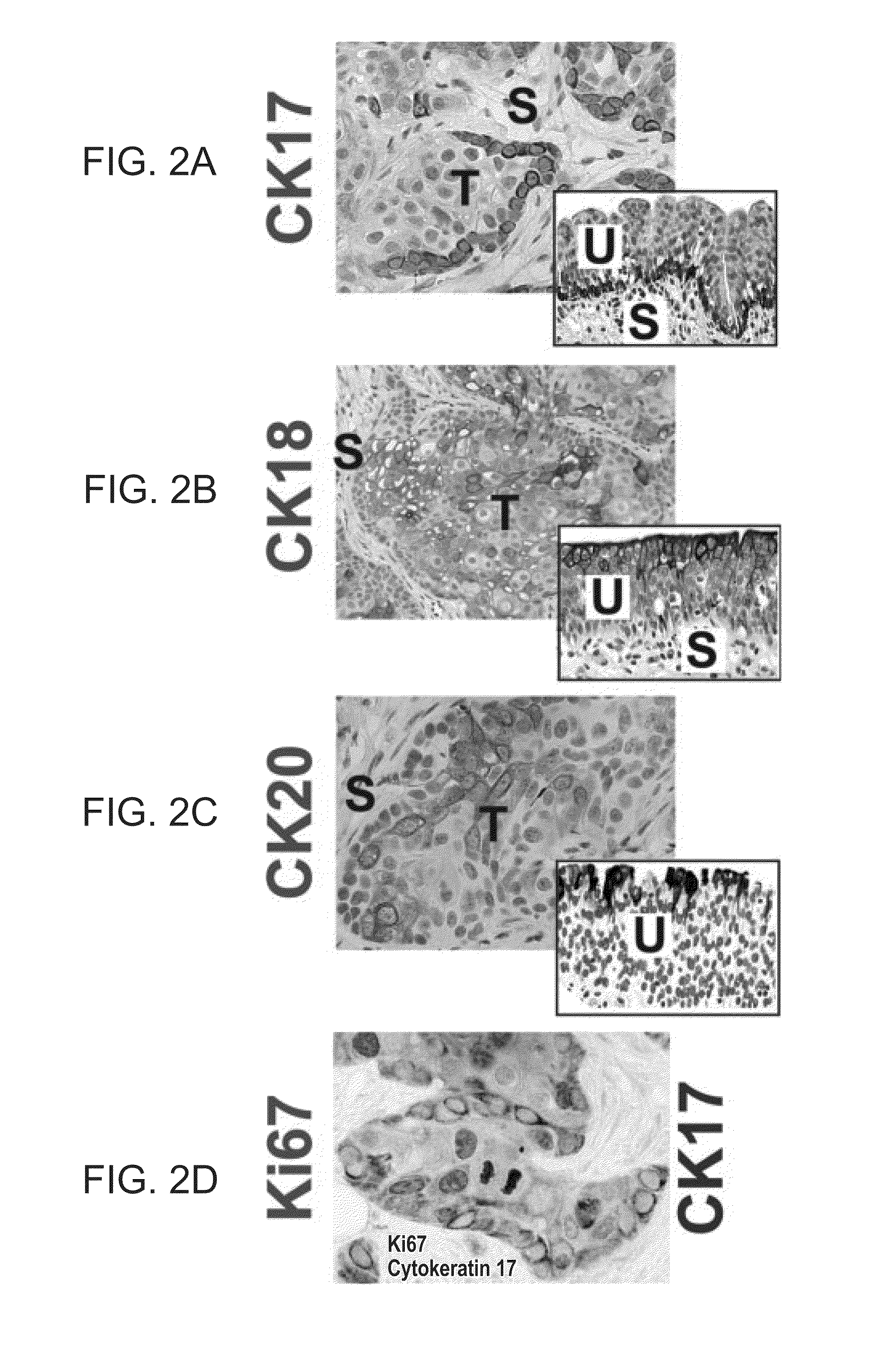Cancer stem cell expression patterns and compounds to target cancer stem cells
a cancer stem cell and expression pattern technology, applied in the field of cancer stem cell expression patterns and compounds to target cancer stem cells, can solve the problems of affecting the overall survival of patients, chemotherapy, radiation and other modalities including newer targeted therapies, exerting toxic effects on cancer cells, etc., and achieving the effect of preventing the progression or worsening of the condition
- Summary
- Abstract
- Description
- Claims
- Application Information
AI Technical Summary
Benefits of technology
Problems solved by technology
Method used
Image
Examples
example 1
Cancer Stem Cell Expression Patterns
Study Method & Design
[0327]The following example describes the results of a study in which a screen was conducted to identify genes preferentially expressed in cancer stem cells.
[0328]A tissue array with 55 cases of invasive urothelial carcinomas, summary stage I-IV, was constructed as described in Fedor and De Marzo. See Fedor, De Marzo, “Practical methods for tissue microarray construction.”Methods Mol. Med. 103: 89-101 (2005). The presence of cancer in the array and immunohistochemical staining for CK17 and CK18 was scored as absent, present with peripheral pattern (strongest at the tumor-stroma interface) or present with equivalent pattern (intensity not increased at tumor-stromal interface). Cases were scored as positive if they fulfilled either of two criteria: intense staining in more than 5% of cells or moderate staining in more than 10% of cells. Two cases lacked cancer on the slide and were censored from the study. The SW780 (human bladd...
PUM
| Property | Measurement | Unit |
|---|---|---|
| Volume | aaaaa | aaaaa |
| Volume | aaaaa | aaaaa |
| Mass | aaaaa | aaaaa |
Abstract
Description
Claims
Application Information
 Login to View More
Login to View More - R&D
- Intellectual Property
- Life Sciences
- Materials
- Tech Scout
- Unparalleled Data Quality
- Higher Quality Content
- 60% Fewer Hallucinations
Browse by: Latest US Patents, China's latest patents, Technical Efficacy Thesaurus, Application Domain, Technology Topic, Popular Technical Reports.
© 2025 PatSnap. All rights reserved.Legal|Privacy policy|Modern Slavery Act Transparency Statement|Sitemap|About US| Contact US: help@patsnap.com



